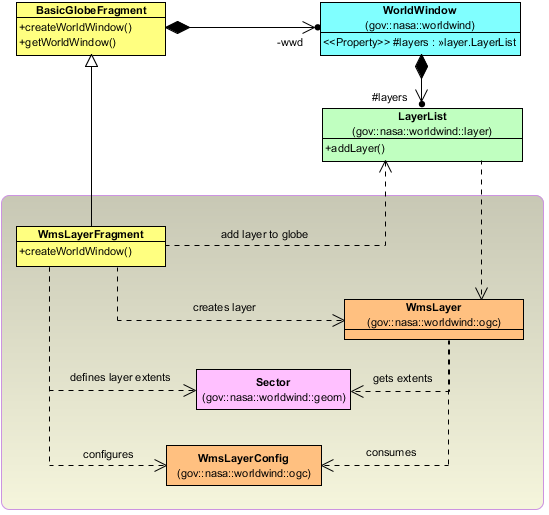WMS Layer
 This example adds a Sea Surface Temperature WMS layer to the basic globe example.
This example adds a Sea Surface Temperature WMS layer to the basic globe example.
WmsLayerFragment.java
The WmsLayerFragment class extends the BasicGlobeFragment and overrides the createWorldWindow method. Here we create a WmsLayerConfig object to define a WMS layer configuration, and then we create a WmsLayer object with the config object. And, finally, we add the new layer to the WorldWindow object.

WmsLayerFragment.java
public class WmsLayerFragment extends BasicGlobeFragment {
/**
* Creates a new WorldWindow (GLSurfaceView) object with a WMS Layer
*
* @return The WorldWindow object containing the globe.
*/
@Override
public WorldWindow createWorldWindow() {
// Let the super class (BasicGlobeFragment) do the creation
WorldWindow wwd = super.createWorldWindow();
// Configure an OGC Web Map Service (WMS) layer to display the
// sea surface temperature layer from NASA's Near Earth Observations WMS.
WmsLayerConfig config = new WmsLayerConfig();
config.serviceAddress = "http://neowms.sci.gsfc.nasa.gov/wms/wms";
config.wmsVersion = "1.1.1"; // NEO server works best with WMS 1.1.1
config.layerNames = "MYD28M"; // Sea surface temperature (MODIS)
WmsLayer layer = new WmsLayer(new Sector().setFullSphere(), 1e3, config); // 1km resolution
// Add the WMS layer to the WorldWindow.
wwd.getLayers().addLayer(layer);
return wwd;
}
}




